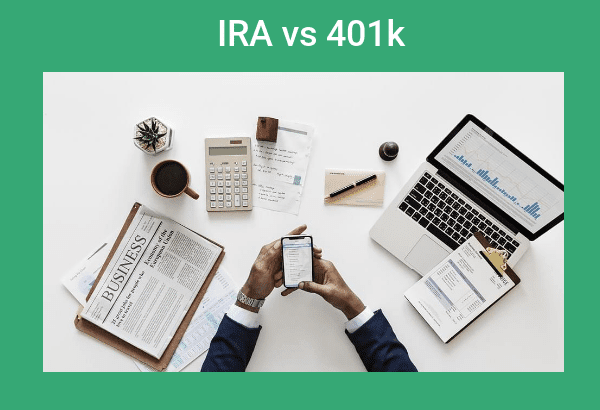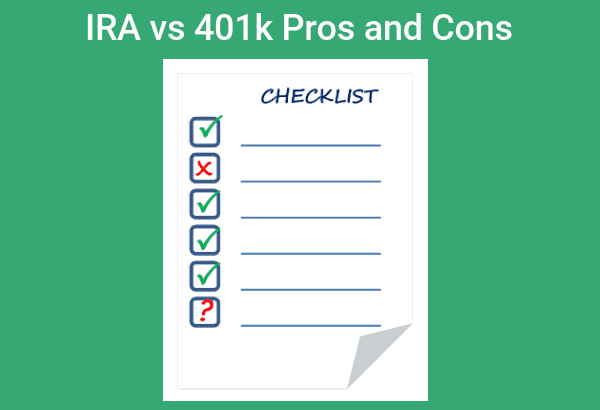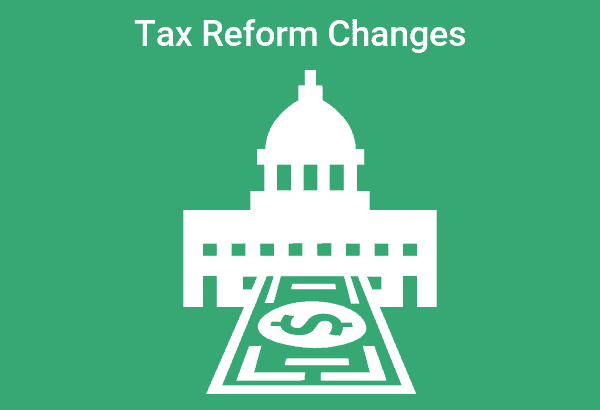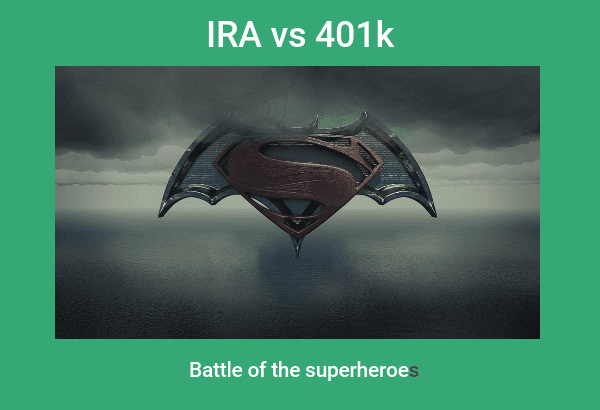
IRA vs 401k
FIRA, 401k, ROTH IRA, SEP IRA, SIMPLE IRA, etc., etc., etc. The types, styles and rules for retirement plans are just mind boggling.
Unless you are self employed then the options that are most available to you are going to be a 401k and/or an IRA. Both provide a defense against future income unknowns and for security, but it’s important to know how they are the same, how they are different, and which one might be better. First, let’s do a quick rundown of some of the similarities between a traditional IRA and a 401k.
IRA vs 401k similarities

IRA vs 401k Pros and Cons
Both are fantastic options for saving for your retirement and financial futures. Both offer a sustainable and growth focused plan. Lastly, the IRA and 401k allow you deduct your contributions.
What’s nice about these options is that there is no tax or interest on capital gains until you start withdrawing the money as a distribution. And they are both subject to the same penalty for early with drawls – up to a 20% tax and 10% penalty if you take it out before you are 59 ½. Thank you, IRS.
IRA Pros
If given the choice between contributing to only a 401k or an IRA, we need to consider some of the advantages and disadvantages. With a traditional IRA, contributions are tax deferred. They’re pretty easy to setup and you have a free reign to invest in whatever you want. Stocks, bonds, forex, options, cryptocurrencies (I checked), futures, you can do it all. You have complete control of an IRA – they don’t call it an Individual Retirement Account for nothing!
IRA Cons
Here’s the stink on IRAs though: contribution limits are way lower than a 401k. While a 401k lets you contribute up to $18,500 a year, the low self-employed individual is limited to just $5,500 a year. Also, you can not borrow from an IRA.
It seems odd that a government which touts the entrepreneur and the small-business owner as the back bone of the economy, wants to create a limit on an individual’s ability and options to protect their future, especially when compared to large corporate employers. And pray you never need to rely on an emergency loan from your IRA, because that is strictly forbidden. Which really sucks because if you really, really need it, you’ll just have to withdraw it and suffer that tiny 20% tax and 10% penalty.
401k Pros
On the 401k side of things, we start to see the disparity between the two. We read that the IRA contribution limit was $5,500 a year. What is the 401k limit per year? A whopping $18,500. Oh, it doesn’t stop there – your employer can contribute up to 6% of your salary – free money! The total yearly contribution limit balloons to $55,000. You can also deduct the amount contributed each year. And if you ever find yourself in an emergency and need some money to tie you over, you can tap into your 401k for a loan.
401k Cons
With all those benefits, it’s hard to believe there are some cons. If you maximize your contributions to your 401k, then you eliminate the possibility of contributing to an IRA. And for those investors who like to have a hands-on approach to their retirement strategy, then you won’t like this plan.
The 401k plan really limits you to whatever the plan manager allows. Where the IRA gives you total control to multiple markets and assets without restrictions, there are limitations with a 401k – if you can choose at all.
Tax Reform Changes

Tax Reform Changes
The new tax law that passed created some situations where people in some States and some income levels may have to look closer at their taxes. The standard deduction increased from $6,000 to $12,000 for individuals and $13,000 to $26,000 for married/joint filers. The SALT (State and Local Income Tax) deduction was also capped to $10k – people who live in high tax States and have expensive property taxes are going to have to pay close attention to that change.
There were also changes to capital gains. An individual who makes less than $38,600 or a joint filer that makes less than $77,000 have a 0% rate. And if you’re income is greater than $425,800 as an individual or $479,000 for joint filers, then your rate is 15%. If you’re in between those income ranges, you’re at 15% on the capital gains tax. (irs.gov)
Tax Reform Retirement Changes – IRA vs 401k
Thankfully, many of the laws regarding retirement plans are the same. On the positive side, the law increased the time limit for repaying 401k loans if you leave your job prior to paying it back (up to the next tax filing year).
The law also increased the 401k contribution limit to $18,500. And if you are actively managing your IRA, they eliminated the First-In-First-Out (FIFO) rule! The old rule required that you must sell open positions in the order that they were opened. Now you can close positions at your leisure regardless of which came first. (Barrons)
On the negative side of things, the tax law does make a couple changes. You can no longer deduct investment and retirement management fees. This is apparently make greedy brokers charge a flat fee as opposed to commission-feeing your account to death. They probably could have gone about that a different way. Also, and this is kind of a big one: you are no longer able to undo a Roth conversion by classifying the converted money to a traditional IRA. (institutional.vanguard.com/VGApp)
Putting it All Together – IRA vs 401k

IRA vs 401k
One thing to realize here is that you can participate in both a 401k and an IRA. If your employer offers both, then which do you choose? The answer should be simple. Even with the lack of flexibility and self-management of a 401k, the traditional IRA does not provide nearly the same amount of punch that a 401k does.
I mean, we’re talking about a $5,500 limit of the IRA to the $55,000 limit of a 401k. That should be not brainer. Oh, let’s not forget the free money you get if your employer is also contributing, even bigger no brainer.
But on the flip side, if you are self-employed or your employer does/doesn’t offer a 401k, then you have the 401k to fall back on. If you are not planning on spending more than the $5,500 limit and/or your young, then the IRA is a great option. In fact, it’s an awesome option.
A lot of young people these days are very active and interested in financial markets and the access to learning about investing and trading is already greater than what was available to the normal person 15 years ago. Younger investors are very much ‘attached’ to particular companies and philosophies so the ability to manage or at least direct their own retirement plan through an IRA may be the best choice for them.
You can do both
If you have an employer that offers a 401k, you likely can contribute to an IRA as well. There’s no law saying you can’t in fact, you might enjoy this option. Taking the scenario from the above paragraph, a person who is interested in directing some of their retirement could certainly deviate a portion of the 401k contributions into the IRA.
This gives you the flexibility of having a fully managed and sturdy retirement plan option while also giving you the ability to invest and direct some of your retirement as you hunt for the next Apple or Amazon.
Word of warning though! $55,000 is the maximum you can contribute each year. So if you are planning on contributing to both a 401k and an IRA, make sure you don’t over contribute. If you do both the 401k and IRA with same company, you won’t have to worry about that: they’ll prevent you from over contributing.
However, if you are doing the 401k from your employer and then you open your own IRA, you need to make sure that your contributions are limited to the $55,000 amount. If you don’t, Uncle Sam and the IRS are going to just love you.
IRA vs 401k – Which One is Better
So, which is better? The winner is: 401k.
If we must pick, one or the other. No combining, no choice but one. Then the 401k is easily the better option. Listen, even if you would like to manage your own retirement and you think you could do better than the team making billions a year to manage the financial future of millions of future retirees, you probably shouldn’t. This is simple math and probabilities here:
Your contribution limit to an IRA is $5,500. Your contribution limit to a 401k is $18,500 plus the employer can splash free money in there. Do you honestly think you can get a 3.5x return year-over-year on your $5,500 yearly contribution limit?
Because that’s the kind of performance you’ll need to just match the 401k contribution limit.
Again, this is a no brainer. An employer splashing free money into your retirement account is free money you don’t get with your IRA. The $18,500 limit in the 401k means you get to put $13,000 more money away a year… and $13k more you can write off on your taxes. And let’s also consider that a team of financial geniuses behind a 401k will likely outperform you and your IRA.
The 401k is the clear winner.










 Awesome Day Trading Strategies
Awesome Day Trading Strategies 
